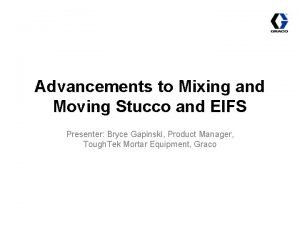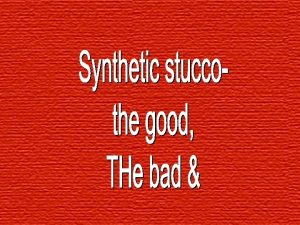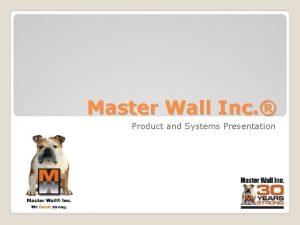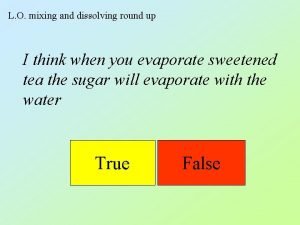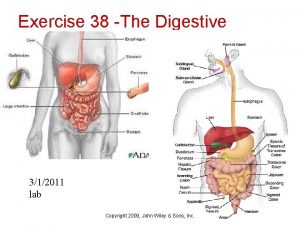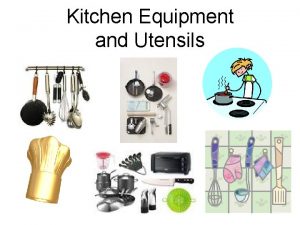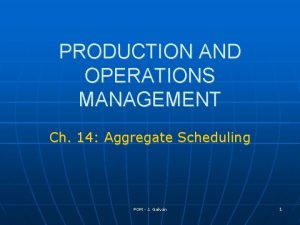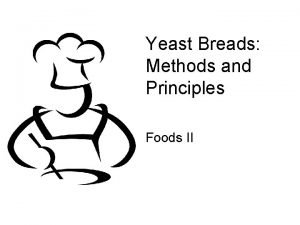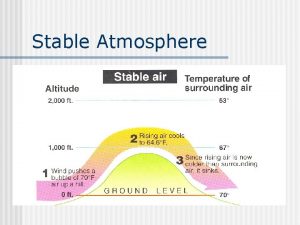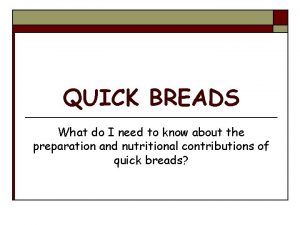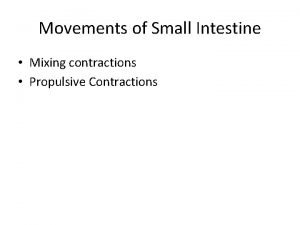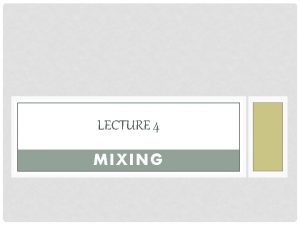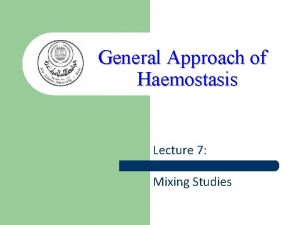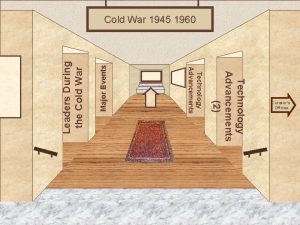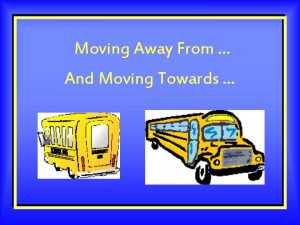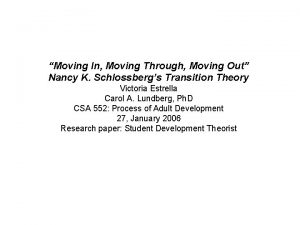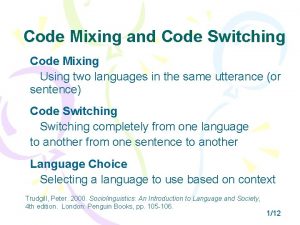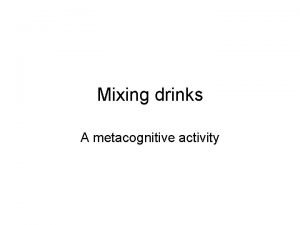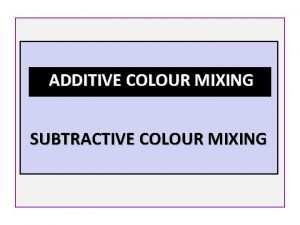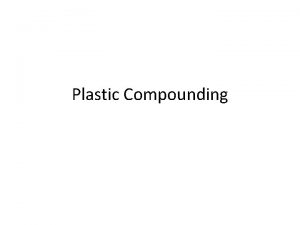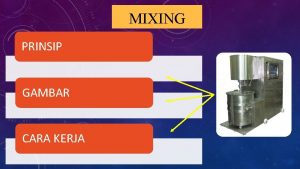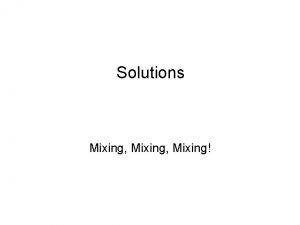Advancements to Mixing and Moving Stucco and EIFS




























- Slides: 28

Advancements to Mixing and Moving Stucco and EIFS Presenter: Bryce Gapinski, Product Manager, Tough. Tek Mortar Equipment, Graco

Agenda • Shifts in the market • Comparison of mixing techniques • Applying stucco and EIFS • What does the future have in store?

Labor Pool Smaller Now Than in the Past 1. Finding new people entering the trades 2. Educating employees 3. Limited resources

Preblended Materials Gaining Traction 1. Spec’d in because less room for error 2. City regulations and Silica Rule 3. Smaller footprint on site 4. Material suppliers actively promoting material

MIXING

Hand Mixing Pros: • Least expensive option • Most widely available • Versatile • Does not require preblended material • Easy to clean and maintain

Hand Mixing Cons: • Water variability (inconsistent mix from bag to bag or operator to operator) • Manual process that can cause personal injury • Slow production • Messy

Batch Mixing Pros: • Automated process that mixes the material • Higher production than hand mixing • Widely available and easily rented • Common in gas and 120 V power options • Does not require preblended material

Batch Mixing Cons: • Material mix variability • Takes time to mix batch to batch • Medium production • Potential for operator to injure themselves while dumping and motor is running

Continuous Mixer Pros: • Automated mixing of water and preblended materials • Highest output option • Least amount of variability in material mixing • Easily dumps into wheel barrel or pump so operation can continuously apply material • Least manual process, helping to prevent operator injury • Safest option for operator

Continuous Mixer Cons: • Only mixes preblended materials • Most expensive option • Requires a dedicated water source

New continuous mixers are entering the market, however… • Simpler to use • Less expensive • Only need 120 V power source

Cost and People Analysis Stucco & EIFS Hand Mixing - $ Batch Mixing - $$ Continuous Mixer $$$ $200 - $500 for hand mixer (drill, bucket) $2, 000 - $8, 000 per batch mixer $6, 400 - $15, 000 per continuous mixer 5 people (3 mixers) 4 people (1 batch mixer) 3 people (1 continuous mixer) 15 -35 20 -35 35 -40 Equipment $1, 500 $3, 000 $6, 400 Labor ($25/hour) Time (175 bags) Total $ 125 10 hours $ 1250 $ 100 5 hours $ 500 $ 75 5 hours $ 375 Cost Mixing Transporting Material Bags/ Hour Cost Estimate

APPLYING STUCCO & EIFS

Hand Applying Pros: • Less equipment • Less setup time • No power requirements • Contractor controls application Cons: • More labor intensive • Slower production

Pumping – Perceptions in the Market • Quality issues – go too fast, work won’t be as good • Messy or difficult to learn • Expensive and difficult to maintain

What’s the biggest difference? Large Pump • Must be towed behind truck • Weighs 2000 – 4000 lbs Small Pump • Small and portable – can be loaded into pickup truck • Weighs 200 lbs

Large Pump Pros: • Twice as fast as hand applying • Very high production • Familiarity of equipment Cons: • Equipment is large and heavy • Takes larger crews to keep up with machine • High pressures can be dangerous

Small Pumps Pros: • Faster than hand applying • Smaller crew size than large pump • Portable • Ease of operation

Spray overhead without getting tired

Small Pumps Cons: • Less production than large pump • Less familiarity (in the market) with pump and its capabilities

Cost and People Analysis Stucco Equipment Cost Hand Applying Large Pump Small Pump $500 -1, 000 $25, 000 -30, 000 $8, 000 -10, 000 $3 per sq. yard per coat $1. 50 per sq. yard per coat Cost per square yard Crew size 8 people 10 people $1. 50 per sq. yard per coat 5 people If using a 10 -man crew, can now do two jobs at once. Bags/ Hour 20 45 -80 35 -40

Continuous Mixer + Hand Applying Continuous Mixer + Small Pump Continuous Mixer + Large Pump

Spraying Stucco with a Small Pump

THE FUTURE

Market Shifts • Aging infrastructure • Tighter deadlines to get jobs done • Future codes and regulations (state and country levels)

Shift to Smaller Pumps and More Efficient Mixers • Newer pumps have higher pressures than they used to have • Require smaller crew sizes • Foot prints of job sites are getting smaller

If you have any questions, please contact us at graco. com/toughtek THANK YOU
 Eifs mixer
Eifs mixer What is eifs
What is eifs Advancements in solar energy
Advancements in solar energy One crazy summer green stucco house
One crazy summer green stucco house Stucco 101
Stucco 101 Masterwall recote
Masterwall recote Minneapolis architecture gambrel roof stucco
Minneapolis architecture gambrel roof stucco Mixing of thymol and menthol
Mixing of thymol and menthol Cutting terms
Cutting terms Mixing red and green marbles physical or chemical change
Mixing red and green marbles physical or chemical change Mixing and dissolving
Mixing and dissolving Exercise 38 review sheet art-labeling activity 1 (2 of 2)
Exercise 38 review sheet art-labeling activity 1 (2 of 2) Salt preparation methods
Salt preparation methods Tools for mixing blending straining and rolling
Tools for mixing blending straining and rolling Key tactics in choosing different brand elements
Key tactics in choosing different brand elements Linguistic repertoire example
Linguistic repertoire example Counterseasonal product and service mixing
Counterseasonal product and service mixing Soft medium dough examples
Soft medium dough examples Warehouse ownership arrangements
Warehouse ownership arrangements Ramco super plaster mixing ratio
Ramco super plaster mixing ratio Mixing height definition
Mixing height definition What does fat do in quick breads
What does fat do in quick breads Single use mixing systems
Single use mixing systems Herbicide mixing cheat sheet
Herbicide mixing cheat sheet Peristaltic contraction
Peristaltic contraction Definition of mixing
Definition of mixing Mixing studies
Mixing studies Mixing study interpretation
Mixing study interpretation What is a mixing study
What is a mixing study
